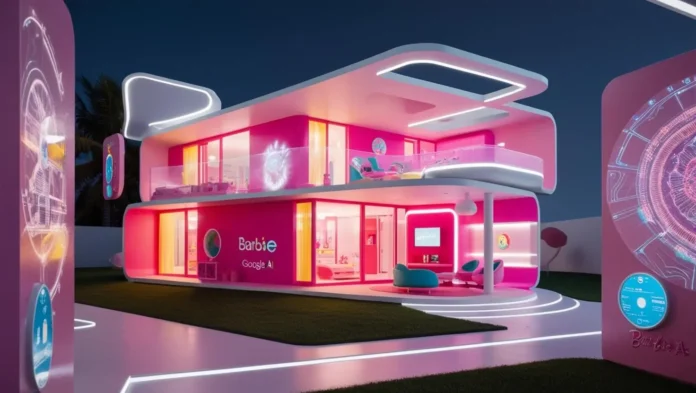When you think of Barbie, you probably imagine a pink dreamhouse—not a tech-infused AI project. But in 2025, that’s exactly what it became. During its recent Cloud Next event in Las Vegas, Google announced a surprising collaboration with Mattel to revolutionize how customer feedback is analyzed using AI.
It may sound like an unexpected partnership, but it’s a perfect example of how artificial intelligence is entering every corner of our lives—even toy houses.
Contents
Google x Mattel: A Match Made in Data
In a world where feedback matters more than ever, toy giant Mattel wanted better insights into what kids and parents love (or don’t) about Barbie Dreamhouse.
With the help of Google Cloud’s BigQuery AI, they began analyzing large volumes of customer data: surveys, reviews, even call center logs. The goal? To understand not just what people are saying, but how they feel.
This collaboration is already showing results, like identifying design trends or preferred play features before they hit the shelves.
What Technology Is Behind This?
Google’s BigQuery AI platform allows companies to run machine learning models directly on their structured data—without needing separate tools or engineers.
Key components include:
- Vertex AI for model training and prediction
- Looker Studio dashboards for visual insights
- Natural Language Processing (NLP) to detect sentiment and emotional tone
Together, they form a robust pipeline that translates messy text data into meaningful product decisions.
Enter the TPUv7: Google’s AI Chip
Beyond Barbie, Google also unveiled its newest AI hardware—the TPUv7 chip, optimized for deep learning tasks and model inference. This chip is designed to process massive data workloads with efficiency and speed, making it ideal for projects like Mattel’s.
The TPUv7 supports Google’s push to democratize AI performance—bringing enterprise-grade machine learning within reach for any size business.
What Makes This Exciting (Even for Non-Techies)?
Let’s face it—Barbie doesn’t usually show up at cloud computing expos. But this move makes AI relatable, even for people outside the tech world:
- Kids and parents indirectly influence design with every review.
- AI becomes a tool for creativity, not just efficiency.
- A classic toy brand is showing how legacy companies can innovate.
Implications for the Future
This collaboration isn’t just about dolls—it’s a template. If Mattel can turn toy feedback into real-time product decisions using AI, any business can.
From fashion to food, AI-driven customer sentiment analysis is set to redefine how companies listen and respond to their users.
Final Thoughts
The Barbie Dreamhouse just got smarter—and maybe a little geekier too. With Google’s AI toolkit powering insights, toy design will never be the same.
It’s a powerful reminder that AI is no longer limited to labs and codebases. It’s here, it’s playful, and it’s living in a Dreamhouse near you.
